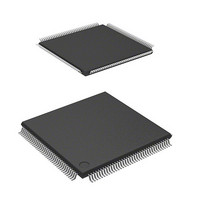DF2166VT33WV Renesas Electronics America, DF2166VT33WV Datasheet - Page 541

DF2166VT33WV
Manufacturer Part Number
DF2166VT33WV
Description
MCU 16BIT FLASH 3V 512K 144-TQFP
Manufacturer
Renesas Electronics America
Series
H8® H8S/2100r
Datasheet
1.HS2168EPI61H-U.pdf
(876 pages)
Specifications of DF2166VT33WV
Core Processor
H8S/2000
Core Size
16-Bit
Speed
33MHz
Connectivity
I²C, IrDA, LPC, SCI, SmartCard
Peripherals
POR, PWM, WDT
Number Of I /o
106
Program Memory Size
512KB (512K x 8)
Program Memory Type
FLASH
Ram Size
40K x 8
Voltage - Supply (vcc/vdd)
3 V ~ 3.6 V
Data Converters
A/D 8x10b; D/A 2x8b
Oscillator Type
External
Operating Temperature
-20°C ~ 75°C
Package / Case
144-TQFP, 144-VQFP
Lead Free Status / RoHS Status
Lead free / RoHS Compliant
Eeprom Size
-
Available stocks
Company
Part Number
Manufacturer
Quantity
Price
Company:
Part Number:
DF2166VT33WV
Manufacturer:
Renesas Electronics America
Quantity:
135
Company:
Part Number:
DF2166VT33WV
Manufacturer:
Renesas Electronics America
Quantity:
10 000
- Current page: 541 of 876
- Download datasheet (5Mb)
Notes: 1. Does not meet the I
7. Notes on ICDR register read at end of master reception
Item
t
SDAHO
To halt reception at the end of a receive operation in master receive mode, set the TRS bit to 1
and write 0 to BBSY and SCP in ICCR. This changes SDA from low to high when SCL is
high, and generates the stop condition. After this, receive data can be read by means of an
ICDR read, but if data remains in the buffer the ICDRS receive data will not be transferred to
ICDR, and so it will not be possible to read the second byte of data.
If it is necessary to read the second byte of data, issue the stop condition in master receive
mode (i.e. with the TRS bit cleared to 0). When reading the receive data, first confirm that the
BBSY bit in the ICCR register is cleared to 0, the stop condition has been generated, and the
bus has been released, then read the ICDR register with TRS cleared to 0.
Note that if the receive data (ICDR data) is read in the interval between execution of the
instruction for issuance of the stop condition (writing of 0 to BBSY and SCP in ICCR) and the
actual generation of the stop condition, the clock may not be output correctly in subsequent
master transmission.
Clearing of the MST bit after completion of master transmission/reception, or other
modifications of IIC control bits to change the transmit/receive operating mode or settings,
must be carried out during interval (a) in figure 15.29 (after confirming that the BBSY bit has
been cleared to 0 in the ICCR register).
2. Value when the IICXn bit is set to 1. When the IICXn bit is cleared to 0, the value is
3.
t
Indi-
cation
3 t
cyc
cyc
The values in the above table will vary depending on the settings of the bits TCSS,
is necessary: (a) secure a start/stop condition issuance interval; (b) adjust the rise and
fall times by means of a pull-up resistor and capacitive load; (c) reduce the transfer rate;
(d) select slave devices whose input timing permits this output timing.
IICX5 to IICX0 and CKS0 to CKS2. Depending on the frequency it may not be possible
to achieve the maximum transfer rate; therefore, whether or not the I
specifications are met must be determined in accordance with the actual setting
conditions.
(– 6t
Calculated using the I
speed mode: 1300 ns min.).
cyc
) (n = 0 to 5).
Standard
mode
High-speed
mode
t
Influence
(Max.)
0
0
Sr
2
/t
C bus interface specification. Remedial action such as the following
Sf
2
C bus specification values (standard mode: 4700 ns min.; high-
Time Indication (at Maximum Transfer Rate) [ns]
I
Specifi-
cation
(Min.)
0
0
2
C Bus
φ =
5 MHz
600
600
φ =
8 MHz
375
375
300
300
φ =
10
MHz
Rev. 3.00, 03/04, page 499 of 830
188
188
φ =
16
MHz
150
150
φ =
20
MHz
2
C bus interface
120
120
φ =
25
MHz
91
91
φ =
33
MHz
Related parts for DF2166VT33WV
Image
Part Number
Description
Manufacturer
Datasheet
Request
R

Part Number:
Description:
KIT STARTER FOR M16C/29
Manufacturer:
Renesas Electronics America
Datasheet:

Part Number:
Description:
KIT STARTER FOR R8C/2D
Manufacturer:
Renesas Electronics America
Datasheet:

Part Number:
Description:
R0K33062P STARTER KIT
Manufacturer:
Renesas Electronics America
Datasheet:

Part Number:
Description:
KIT STARTER FOR R8C/23 E8A
Manufacturer:
Renesas Electronics America
Datasheet:

Part Number:
Description:
KIT STARTER FOR R8C/25
Manufacturer:
Renesas Electronics America
Datasheet:

Part Number:
Description:
KIT STARTER H8S2456 SHARPE DSPLY
Manufacturer:
Renesas Electronics America
Datasheet:

Part Number:
Description:
KIT STARTER FOR R8C38C
Manufacturer:
Renesas Electronics America
Datasheet:

Part Number:
Description:
KIT STARTER FOR R8C35C
Manufacturer:
Renesas Electronics America
Datasheet:

Part Number:
Description:
KIT STARTER FOR R8CL3AC+LCD APPS
Manufacturer:
Renesas Electronics America
Datasheet:

Part Number:
Description:
KIT STARTER FOR RX610
Manufacturer:
Renesas Electronics America
Datasheet:

Part Number:
Description:
KIT STARTER FOR R32C/118
Manufacturer:
Renesas Electronics America
Datasheet:

Part Number:
Description:
KIT DEV RSK-R8C/26-29
Manufacturer:
Renesas Electronics America
Datasheet:

Part Number:
Description:
KIT STARTER FOR SH7124
Manufacturer:
Renesas Electronics America
Datasheet:

Part Number:
Description:
KIT STARTER FOR H8SX/1622
Manufacturer:
Renesas Electronics America
Datasheet:

Part Number:
Description:
KIT DEV FOR SH7203
Manufacturer:
Renesas Electronics America
Datasheet:











